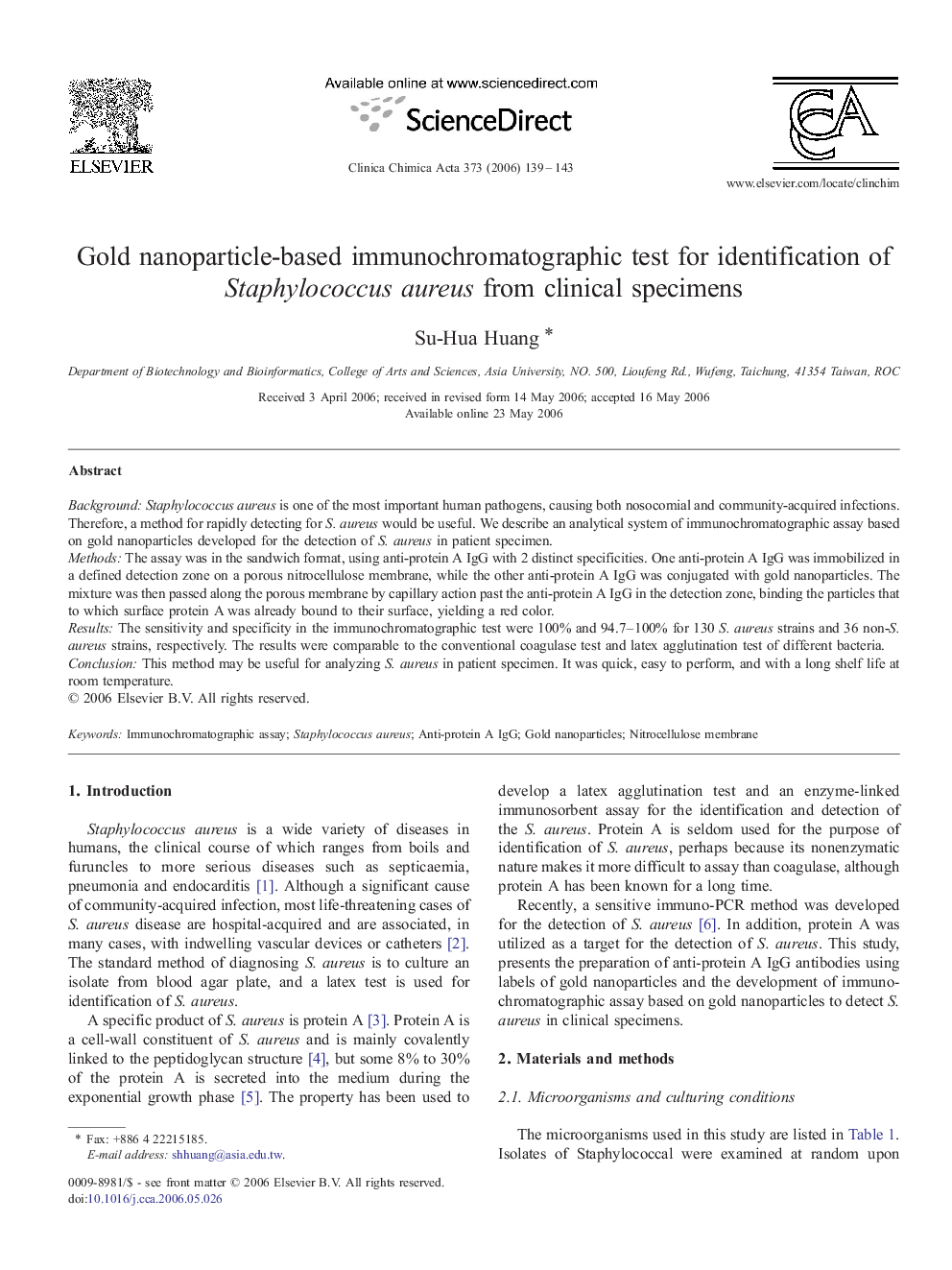| Article ID | Journal | Published Year | Pages | File Type |
|---|---|---|---|---|
| 1967996 | Clinica Chimica Acta | 2006 | 5 Pages |
BackgroundStaphylococcus aureus is one of the most important human pathogens, causing both nosocomial and community-acquired infections. Therefore, a method for rapidly detecting for S. aureus would be useful. We describe an analytical system of immunochromatographic assay based on gold nanoparticles developed for the detection of S. aureus in patient specimen.MethodsThe assay was in the sandwich format, using anti-protein A IgG with 2 distinct specificities. One anti-protein A IgG was immobilized in a defined detection zone on a porous nitrocellulose membrane, while the other anti-protein A IgG was conjugated with gold nanoparticles. The mixture was then passed along the porous membrane by capillary action past the anti-protein A IgG in the detection zone, binding the particles that to which surface protein A was already bound to their surface, yielding a red color.ResultsThe sensitivity and specificity in the immunochromatographic test were 100% and 94.7–100% for 130 S. aureus strains and 36 non-S. aureus strains, respectively. The results were comparable to the conventional coagulase test and latex agglutination test of different bacteria.ConclusionThis method may be useful for analyzing S. aureus in patient specimen. It was quick, easy to perform, and with a long shelf life at room temperature.
